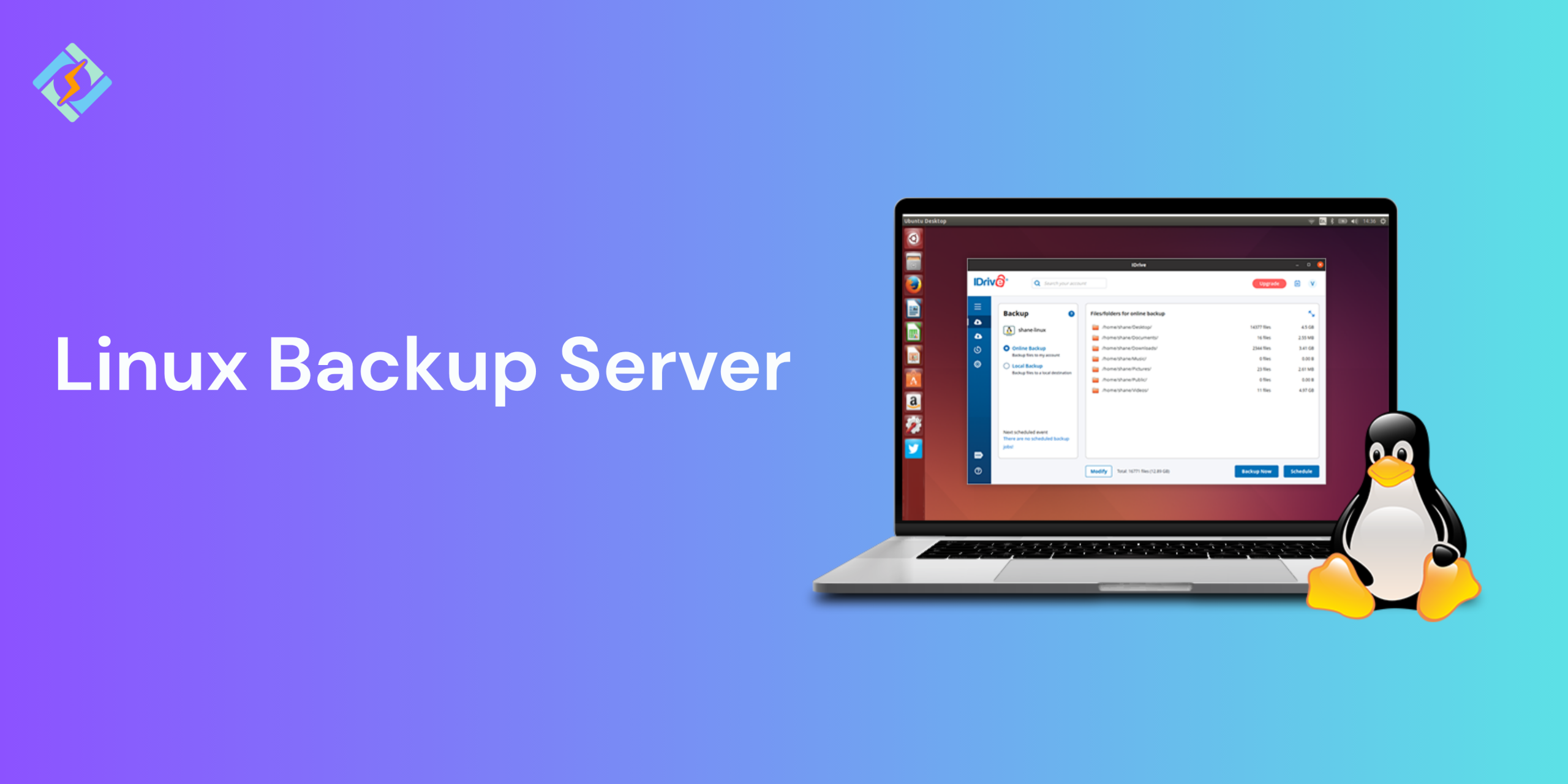In today’s world of lightning-speed digital transactions, data is the core of every business and personal operation. Whether you’re operating a startup, running a blog, taking care of e-commerce sites, or handling enterprise-level infrastructures losing data isn’t an option. Accidental deletion, hardware malfunction, ransomware attacks, or just plain human error can lead to complete loss if backups aren’t there.
That’s where a Linux backup server can save the day. It’s a cheap and reliable means of protecting your digital treasures. With proper setup and utilities, a Linux-based backup server can become the foundation of your disaster recovery plan.
In this article, we’ll walk through what a Linux backup server is, why it’s vital, how to set it up, the best tools to use, backup strategies, and ongoing maintenance. By the end, you’ll have a comprehensive understanding of how to build and manage a dependable Linux backup server whether it’s for personal use or enterprise operations.
What is a Linux Backup Server?

A Linux backup server is a separate machine or virtual server operating a Linux operating system that holds and maintains backups of other systems’ data. It can accept data via the network, perform versioning of backups, schedule periodic backups, as well as restore data where necessary.
It is not just for Linux-only systems. A Linux backup server can also backup information from Windows, macOS, and other systems with the proper tools and protocols.
Why Use Linux for a Backup Server?
There are a few reasons why Linux is most commonly used as the operating system for backup servers:
- Stability: Linux systems are famous for their uptime and reliability.
- Security: With the proper configurations, Linux can be very secure and resistant to attacks.
- Cost-Effective: Linux distributions are predominantly free and open source.
- Customizability: You can customize Linux precisely to your backup requirements minimal installations, lean GUIs, CLI control, etc.
- Tool Availability: Linux accommodates a vast selection of open-source backup tools like rsync, Bacula, Duplicity, and others.
With Linux, administrators have granular control over every facet of the backup system from scheduling and permissions to storage and network access.
Common Use Cases
A Linux backup server can be utilized in a range of situations:
- Personal backups: Saving photos, documents, and system files
- Web hosting: Maintaining copies of websites and databases
- Enterprise backup: Accommodating incremental backups of employee systems or servers
- DevOps environments: Saving application and configuration data for reproducibility and rollback.
If you are an individual developer or running a fleet of servers, a Linux backup system can be scaled up or down correspondingly.
Get exclusive access to all things tech-savvy, and be the first to receive
the latest updates directly in your inbox.
Choosing the Right Linux Distribution
Before setting up your backup server, you’ll need to choose the right Linux distro. Here are a few options commonly used:
- Ubuntu Server: Popular and well-documented. Good for beginners.
- Debian: Very stable and well-supported, perfect for long-term installations.
- CentOS / Rocky Linux / AlmaLinux: Ideal for enterprise-grade deployments.
- Arch Linux: Lightweight, but better suited for advanced users who want total control.
- OpenSUSE: Comes with YaST for easier configuration.
For most users, Ubuntu Server or Debian are excellent starting points. They offer long-term support (LTS) versions and have access to extensive package repositories.
Core Components of a Linux Backup Server
Let’s go over the main components you’ll be working with when setting up your Linux backup server:
- Storage: Internal or external hard drives, network-attached storage (NAS), or cloud-integrated drives.
- Network Configuration: The server should be reachable across the local network or internet for remote backup purposes.
- Backup Software: Software to run, schedule, and execute backups.
- Automation Tools: Cron job or scripts to run periodic backups.
- Security Measures: SSH keys, firewalls, encrypted disks, etc.
How to Set Up a Linux Backup Server (Step-by-Step)
Step 1: Install the Linux OS
Download the ISO of the desired Linux distribution and install it onto your hardware or virtual machine. Utilize minimal installation options if the server will only be used for backups.
Post-installation:
<code>sudo apt update && sudo apt upgrade # For Ubuntu/Debian installations</code>Step 2: Configure Static IP and Hostname
Allocate a static IP so the server address doesn’t alter during reboots.
Edit netplan configuration (Ubuntu):
<code>sudo nano /etc/netplan/01-netcfg.yaml</code>Sample configuration:
<code>network:<br>version: 2<br>ethernets:<br>enp0s3:<br>dhcp4: no<br>addresses: [192.168.1.100/24]<br>gateway4: 192.168.1.1<br>nameservers:<br>addresses: [8.8.8.8, 1.1.1.1]</code>Apply changes:
sudo netplan applySet hostname:
sudo hostnamectl set-hostname backup-serverStep 3: Install SSH for Remote Access
sudo apt install openssh-server<br>sudo systemctl enable ssh<br>sudo systemctl start sshYou can now log in to the server using SSH:
ssh user@192.168.1.100Step 4: Install Storage
Mount an external storage or additional disk. Format and mount it correctly.
Example to format and mount:

sudo mkfs.ext4 /dev/sdb1<br>sudo mkdir /mnt/backup<br>sudo mount /dev/sdb1 /mnt/backupAdd to /etc/fstab for persistence:
/dev/sdb1 /mnt/backup ext4 defaults 0 0Backup Tools for Linux Backup Server
Let’s examine some of the best tools you can use on your Linux backup server.
1. Rsync (Reliable and Classic)
Rsync is one of the strongest file copy tools that are delta-transfer and backup-efficient.
Example command:
rsync -avz /home/user/data/ backupuser@192.168.1.100:/mnt/backup/data/Pros:
- Built-in
- Light and fast
- Supports cron automation and SSH
Cons:
- No GUI built-in
- Manual versioning requires scripting
2. BorgBackup
Borg is a deduplicating backup program that provides compression and encryption.
Installation:
sudo apt install borgbackupInitialize a repository:
borg init --encryption=repokey /mnt/backup/borg_repoCreate a backup:
borg create /mnt/backup/borg_repo::my_backup ~/DocumentsPros:
- Efficient deduplication
- Encrypted by default
- Suitable for large-scale or multi-server backups
3. Duplicity
Duplicity offers encrypted, incremental backups to local or remote storage.
Install:
sudo apt install duplicityBackup example:
<code>duplicity ~/Documents file:///mnt/backup/duplicity/</code>Restore:
duplicity restore file:///mnt/backup/duplicity/ ~/Documents_restore4. Bacula
Bacula is enterprise-level backup software appropriate for businesses.
Features:
- Centralized management
- Supports tape libraries, disk storage, and cloud
- Web-based GUI available via
BWeb - But Bacula is difficult to install and configure relative to
rsyncor Duplicity.
5. Timeshift (For System Backup)
Ideal for individual or desktop system file and configuration backup. Comparable to Windows Restore Points.
sudo apt install timeshiftIt is not suitable for multi-user systems or business but suits local system recovery nicely.
Automation Using Cron
Schedule a cron job to execute your backup scripts periodically:
<code>crontab -e</code>Sample to execute rsync daily at midnight:
0 0 * * * /home/user/backup-script.shMake sure your script is executable:
chmod +x backup-script.shRemote Backups: Pull or Push?
There are two primary methods:
- Pull backups: The backup server pulls data from other computers to initiate the backup.
- Push backups: The client computer pushes data to the backup server.
Both options are acceptable. Pull-based is great for centralized control. Push-based is more suitable if you need client systems to have control over their backup frequency.
Securing Your Backup Server
Because the backup server contains sensitive information, security takes top priority:
- Use SSH keys rather than passwords
- Configure firewall rules (ufw)
sudo ufw allow ssh<br>sudo ufw enable- Restrict SSH login to particular users
- Use fail2ban to resist brute-force attacks
sudo apt install fail2ban- Encrypt backup drives or utilize encrypted file systems
- Keep your system updated regularly
Verifying and Restoring Backups
Simply having backups is not enough you must check them.
- Use checksum checks.
- Restore test data occasionally to ensure the integrity of backups.
- Keep backup logs and monitoring programs handy to warn of failures.
Best Linux Backup Server Practices
Adopt the 3-2-1 rule:
- 3 copies of your data
- 2 types of storage media
- 1 offsite backup
- Version your backups: Don’t overwrite. Keep snapshots.
- Document your backup policy: Write down what, when, and how things are being backed up.
- Rotate and prune old backups: Reserve space with tools such as Borg’s prune or custom
rsync scripts. - Consider disaster scenarios: Floods, fires, ransomware design with worst-case in mind.
Real-World Example Setup
Let’s say you’re backing up three Ubuntu workstations in an office to a central Linux backup server nightly using rsync.
- Backup server IP: 192.168.1.100
- On each client machine, add
cronjob:
rsync -az /home/user/ backup@192.168.1.100:/mnt/backup/hostname/- On the server, configure firewall to accept SSH only from office subnet.
- Weekly, the admin runs restore tests from backup data to ensure recoverability.
Final Thoughts
A Linux backup server isn’t an extravagance, it’s a requirement. Whether safeguarding family photos or corporate databases, data loss is far more expensive than investing in a robust backup system.
By working with Linux, you gain trust in a universe of open-source, adaptive tools and community resources. Setup costs and complexity do not need to be part of the equation. With a few basic tools and best practices, you can create a robust and secure backup system that will provide you with peace of mind.
FAQs
What is a Linux backup server?
A Linux backup server is a dedicated system running a Linux operating system designed to store, manage, and restore data backups from multiple devices or servers. It typically uses tools like rsync, BorgBackup, Duplicity, or enterprise-level solutions like Bacula to automate and organize backup operations.
Why should I use Linux for a backup server?
Linux is ideal for backup servers due to its stability, low resource consumption, security features, and compatibility with powerful open-source backup tools. It also allows full customization, making it easy to tailor backup workflows to specific needs, whether for personal use or enterprise-level deployments.
Can a Linux backup server back up Windows or macOS systems?
Yes, with the right configuration and tools, a Linux backup server can receive and store backups from Windows and macOS devices. Tools like rsync, SMB shares, or agent-based solutions such as UrBackup or Bacula clients make cross-platform backups possible.



